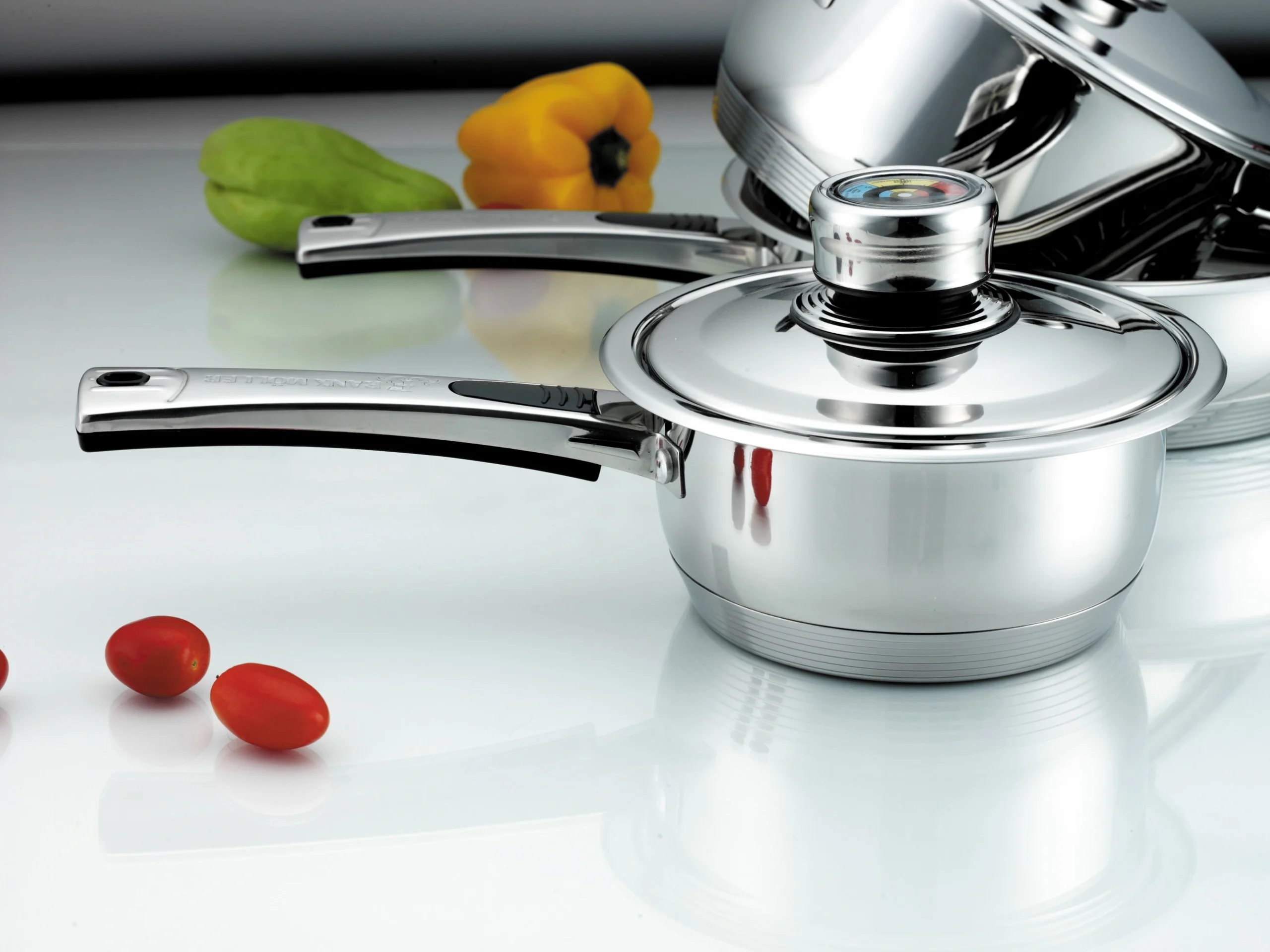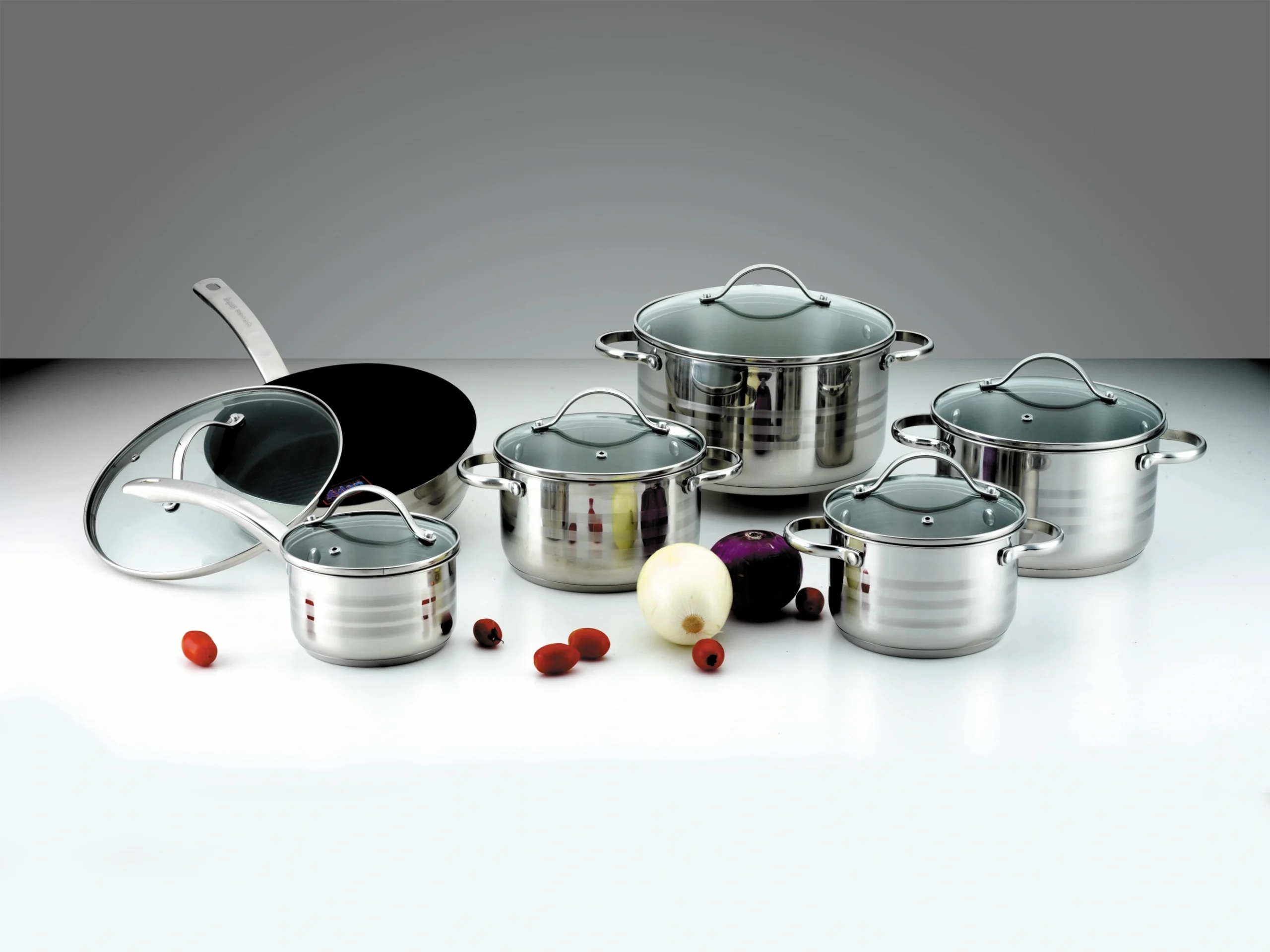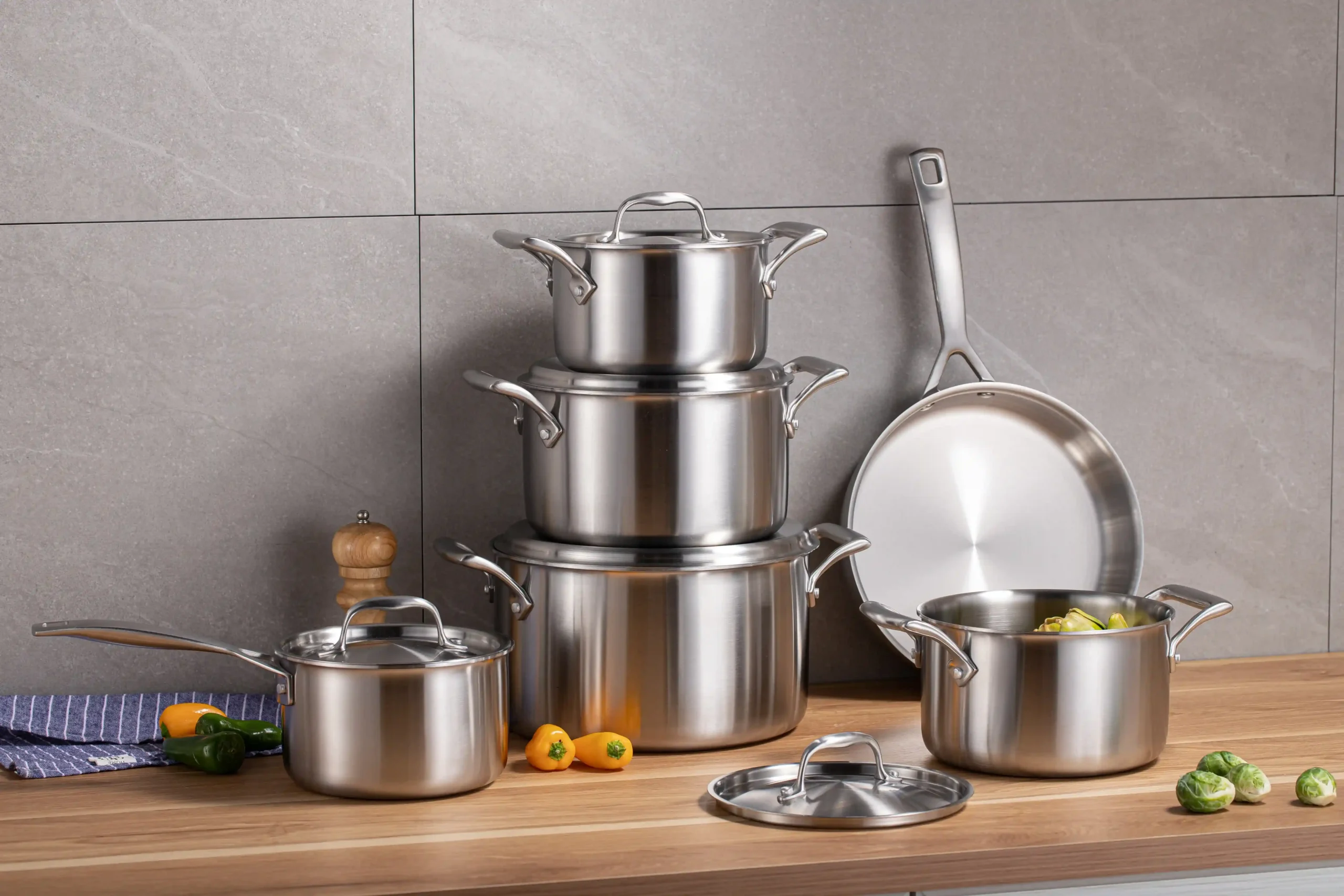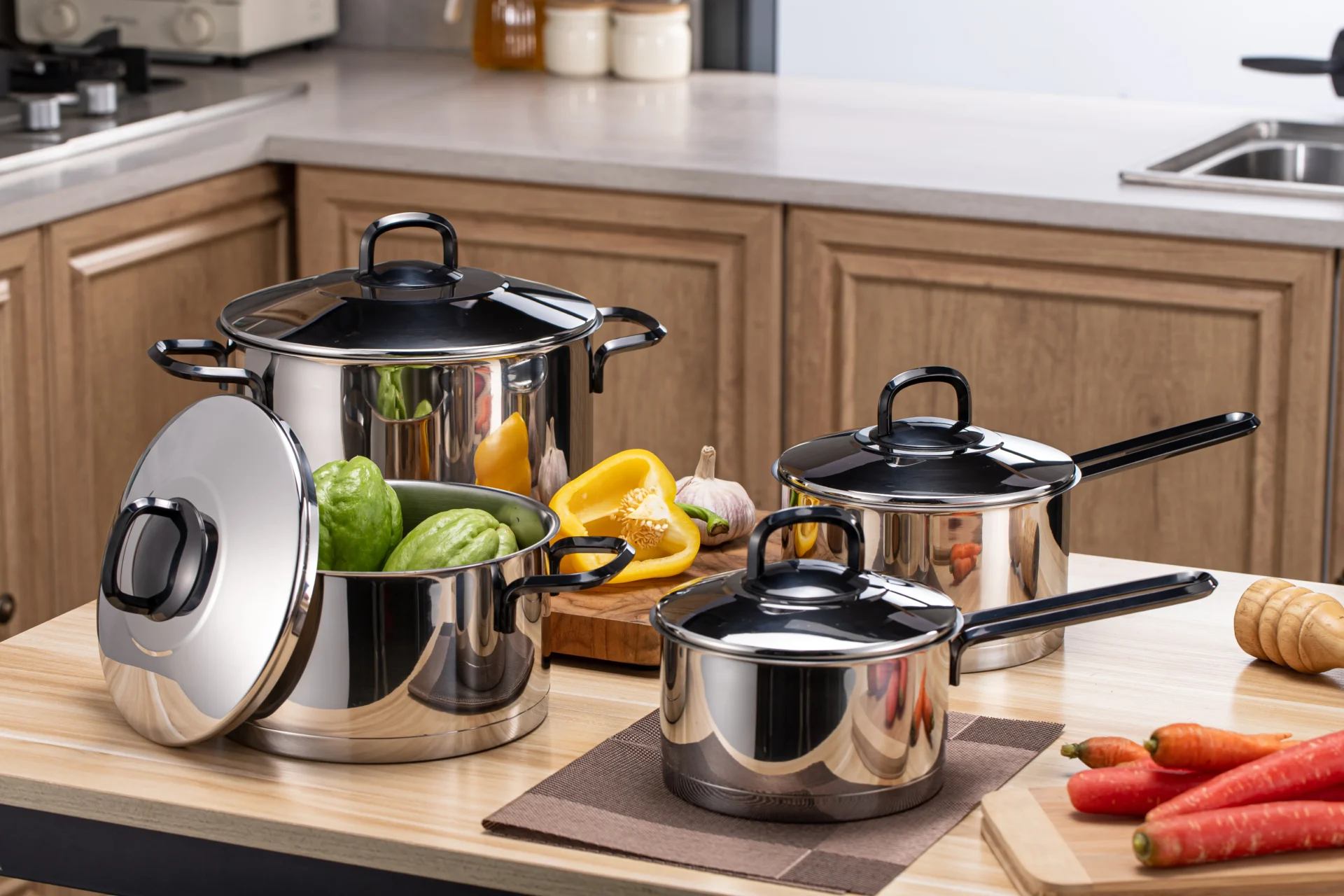
Introduction: The B-End Demand for Non-Toxic Cookware
For B-end buyers (hotel procurement teams, catering chains, foreign trade firms), non-toxic cookware is not just a “quality requirement” but a “risk control necessity”—it directly affects customer health and brand reputation. Among numerous materials, 304 stainless steel stands out as the gold standard for non-toxic cookware, with unique advantages that make it the first choice for stainless steel cookware safe solutions. This article breaks down why 304 steel leads the non-toxic cookware market and how it meets B-end bulk procurement needs.
1. Why 304 Stainless Steel Is Inherently Non-Toxic
The non-toxicity of 304 stainless steel comes from its stable chemical composition and strict production standards—two factors that eliminate “harmful leaching” risks, a common concern with low-quality cookware.
1.1 Stable Chromium-Nickel Alloy Composition
304 stainless steel contains 18% chromium and 8% nickel, forming a dense chromium oxide film on the surface. This film is corrosion-resistant and heat-stable, preventing metal ions from seeping into food even during long-term high-temperature cooking (e.g., simmering soups in a safe saucepan). Unlike low-grade stainless steel, it never releases harmful substances like lead or cadmium.
1.2 Compliance with Global Food-Safety Standards
Qualified 304 stainless steel cookware meets international standards such as FDA (U.S.) and LFGB (EU) for food contact materials. Every batch undergoes strict testing to confirm no toxic residues—this is why 304 steel is the core material for stainless steel cookware safe products, especially for B-end buyers who need to meet multi-market safety regulations.
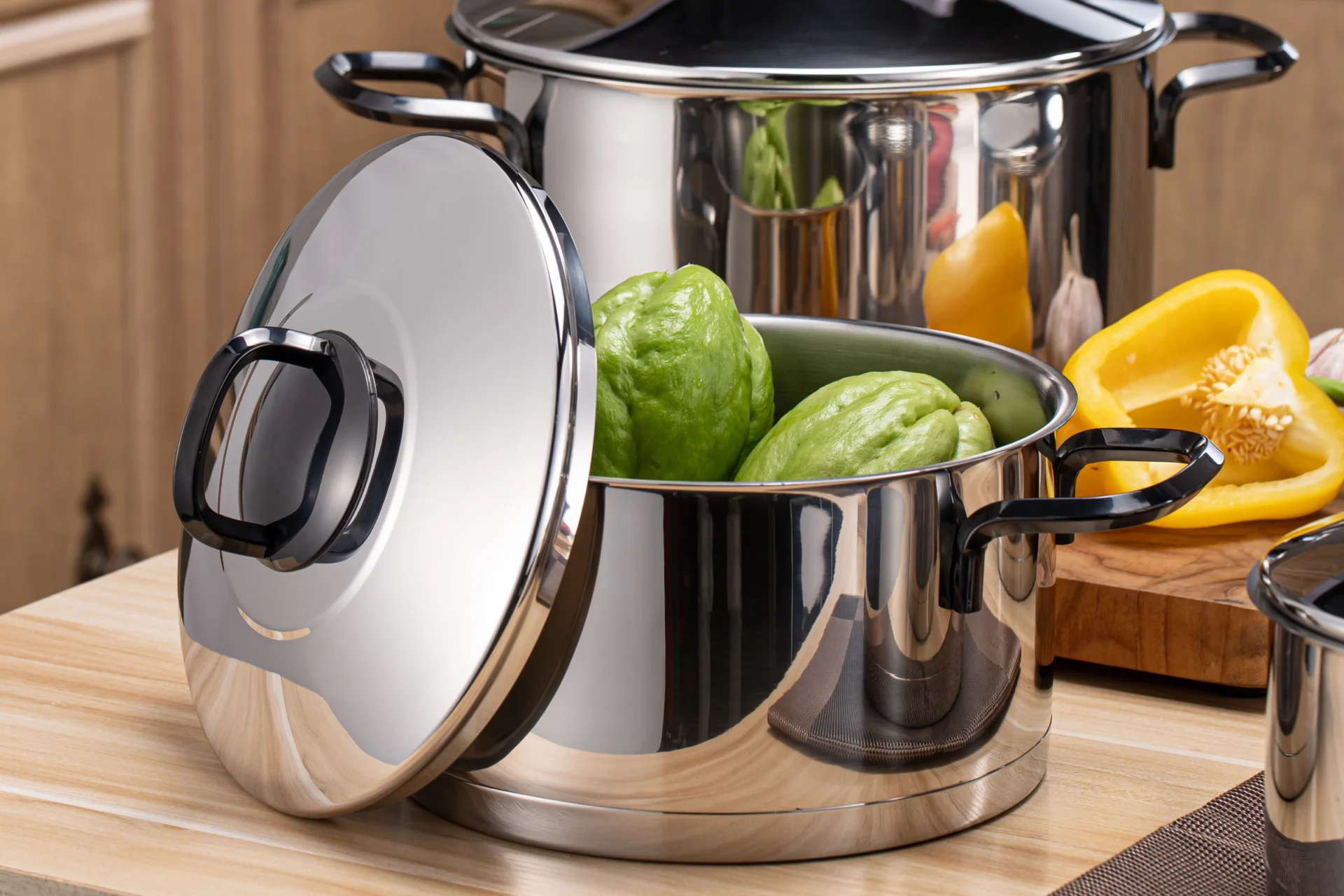
2. 304 Steel vs. Other Materials: A Safety & Durability Comparison
B-end buyers prioritize “long-term safety + low maintenance cost.” When compared to common cookware materials, 304 stainless steel outperforms in both aspects, solidifying its status as best and safest cookware.
2.1 vs. Coated Non-Stick Cookware
Coated non-stick cookware risks coating peeling (especially with metal utensils), which may cause ingestion of toxic substances. 304 stainless steel has no coating, so it avoids this risk entirely—even after years of heavy use in hotel kitchens, it remains non-toxic and scratch-resistant.
2.2 vs. Aluminum/Carbon Steel Cookware
Aluminum cookware may leach aluminum ions when in contact with acidic foods (e.g., tomatoes), while carbon steel is prone to rust. 304 stainless steel resists both corrosion and rust, maintaining safety and durability without additional coatings—reducing B-end replacement costs.
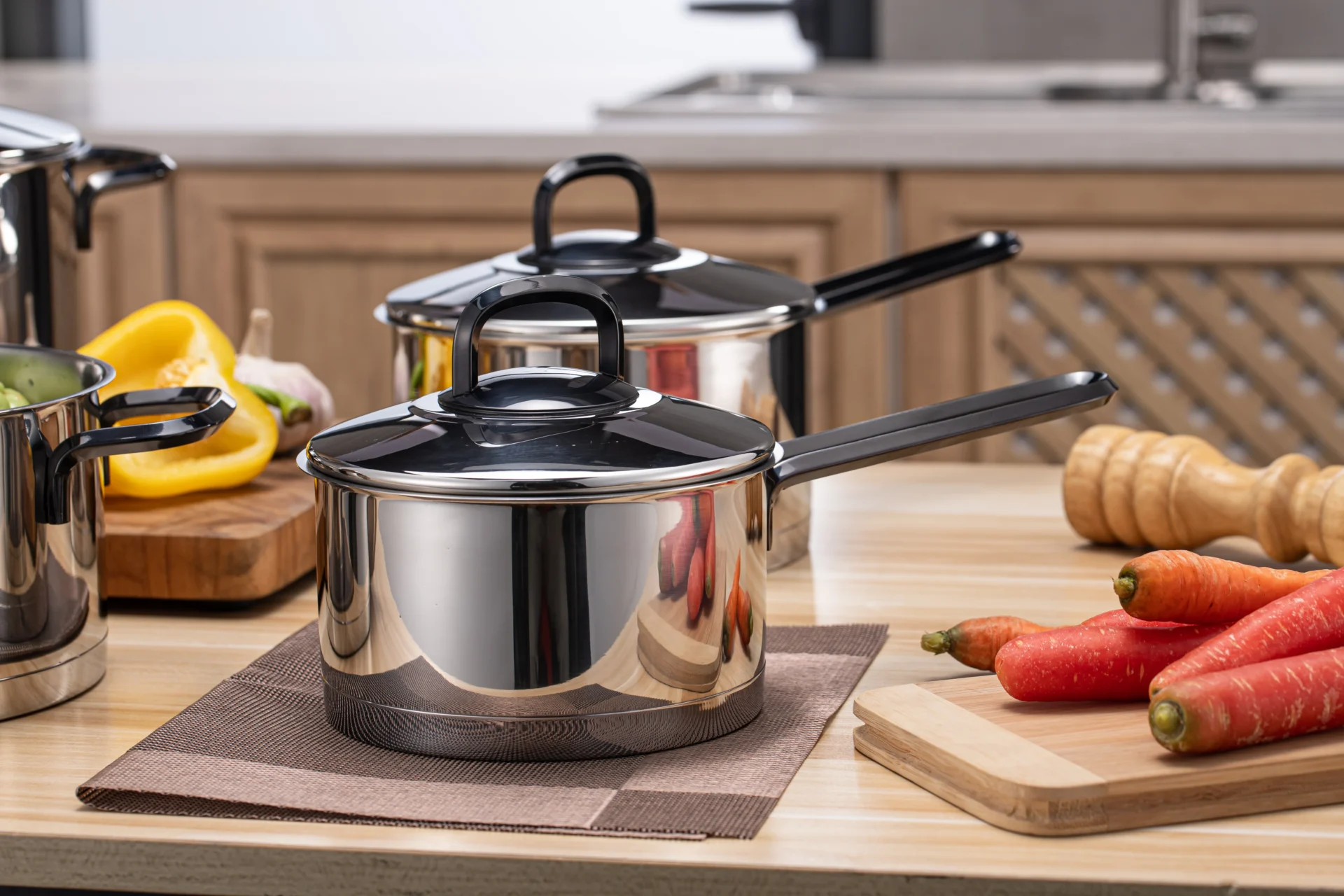
3. 304 Steel Cookware: Safe Solutions for B-End Scenarios
B-end cookware use is characterized by “high frequency, large batches, and diverse scenarios”—304 stainless steel’s non-toxicity and adaptability make it suitable for all key scenarios.
3.1 Hotel & Catering: Safe for Mass Cooking
In hotel banquets or chain restaurant kitchens, safe saucepan and stockpots made of 304 steel handle daily cooking for 100+ people. Their non-toxicity ensures consistent food safety, while heat uniformity prevents overcooking—aligning with B-end “efficiency + safety” dual demands.
3.2 Foreign Trade Export: Meets Multi-Country Standards
When exporting to global markets, 304 stainless steel cookware easily passes customs inspections thanks to its compliance with FDA/LFGB. For foreign trade buyers, this means no “safety rejections” or “market recalls”—a critical advantage for best and safest cookware suppliers.
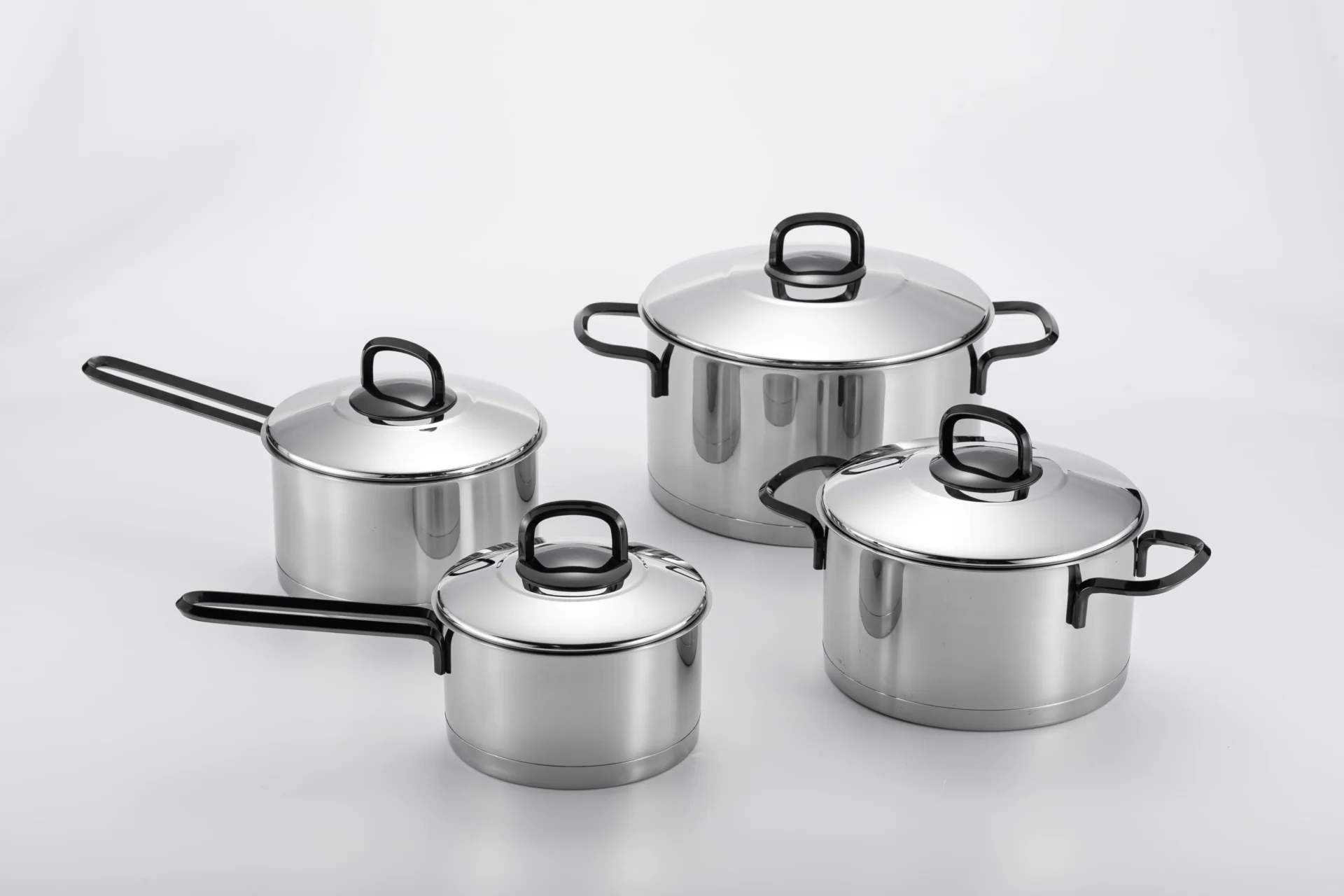
Not all “stainless steel cookware” is 304—B-end buyers need to master simple verification methods to ensure they purchase truly non-toxic products.
4.1 Check Material Markings & Certifications
Genuine 304 cookware is marked with “304” or “18-8” on the bottom. Additionally, ask manufacturers for ISO 9001 quality certificates and food-safety test reports—these documents confirm the product is stainless steel cookware safe.
4.2 Inspect Surface & Welding Quality
High-quality 304 cookware has a smooth, burr-free surface (no rough spots that trap food residues). Welds (e.g., between pot bodies and handles) should be even and firm—poor welding may lead to corrosion and hidden safety risks over time.
Conclusion: 304 Stainless Steel—The B-End Choice for Non-Toxic Cookware
For B-end buyers, choosing non-toxic cookware is choosing “long-term brand trust.” 304 stainless steel, with its stable non-toxicity, durability, and global compliance, is undoubtedly the best and safest cookware material. As a professional 304 stainless steel cookware manufacturer, JC Cookware adheres to strict material selection and production standards—every safe saucepan and cookware set meets international safety requirements, providing B-end partners with “zero-risk” supply chain support.
If you’re seeking non-toxic, durable cookware for bulk procurement, contact us to get customized solutions tailored to your scenario (hotel, catering, export, etc.).

